Communities - Central
Jump to: Fayette County Communities
Effingham County
Montrose
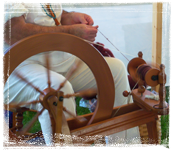 Founded in 1870 by J.B. Johnson, Montrose has rarely had a population over 300, but can boast of some interesting characters from its past. These include Dr. Goebel, who delivered more than 2,000 babies during his 41 year medical career and early businessman Philip Wiwi, whose two-story mansion is still an eye catcher. Wiwi operated a store and grain house in the late 19th century. Former Illinois lieutenant governor Lawrence Yates Sherman (1905-1909), who married a native of the town, is buried in the Montrose Cemetery. Yates also served eight years in the U.S. Senate. The village has paid tribute to its veterans with a memorial near the center of town.
Founded in 1870 by J.B. Johnson, Montrose has rarely had a population over 300, but can boast of some interesting characters from its past. These include Dr. Goebel, who delivered more than 2,000 babies during his 41 year medical career and early businessman Philip Wiwi, whose two-story mansion is still an eye catcher. Wiwi operated a store and grain house in the late 19th century. Former Illinois lieutenant governor Lawrence Yates Sherman (1905-1909), who married a native of the town, is buried in the Montrose Cemetery. Yates also served eight years in the U.S. Senate. The village has paid tribute to its veterans with a memorial near the center of town.
Montrose is making preparations for its sesquicentennial (1870-2020) next year.
Montrose has a National Road Kiosk in front of the fire station on Route 40.
Teutopolis
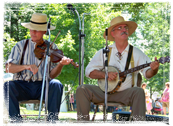 Having purchased acreage from the federal government, German settlers from Cincinnati arrived in 1837 and founded Teutopolis. The naming of the town pays tribute to the Teutons, an ancient German tribe. Platting of the town didn't occur until 1839 and John Uptmor holds the distinction of being its first citizen because he was the first to own a house there. The 1858 arrival of nine Franciscan friars led to the construction of a monastery. Since 1975, the remnants of the monastery have housed a museum. Teutopolis is also home to Siemer Milling, which opened for business in November 1882.
Having purchased acreage from the federal government, German settlers from Cincinnati arrived in 1837 and founded Teutopolis. The naming of the town pays tribute to the Teutons, an ancient German tribe. Platting of the town didn't occur until 1839 and John Uptmor holds the distinction of being its first citizen because he was the first to own a house there. The 1858 arrival of nine Franciscan friars led to the construction of a monastery. Since 1975, the remnants of the monastery have housed a museum. Teutopolis is also home to Siemer Milling, which opened for business in November 1882.
Teutopolis has earned a reputation for its excellent high school sports programs, particularly in basketball, where the Lady Shoes won three consecutive state titles from 1987-88 to 1989-90. They also won state titles in 1985-86 and 2004-2005.
Teutopolis celebrated its Terquasquicentennial (1839-2014) in 2014. There was a pageant, parade, king and queen, bed races, and a History of Teutopolis, Illinois 1839-2014 Power Point presentation that drew 600 visitors. There was a variety of souvenirs available as well as a special brand of beer specially brewed for that event. Many people were in period costumes.
Teutopolis has a National Road kiosk next to the Teutopolis Village Hall on Route 40.
Effingham
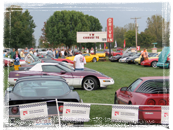 Known today as the "Crossroads of Opportunity" for is location on I-70 and I-57, the city began as a settlement along the Little Wabash River. Effingham was originally known as Broughton, but was later changed to honor Edward Effingham, a general in the British army who refused to fight in the Revolutionary War against the colonists. The National Road and growth of the railroad were prime factors to the community's early success. The town was the crossroads for the Pennsylvania and Illinois Central railroads. Ada Kepley, the first American woman to graduate from a law school, was one of Effingham's most famous residents.
Known today as the "Crossroads of Opportunity" for is location on I-70 and I-57, the city began as a settlement along the Little Wabash River. Effingham was originally known as Broughton, but was later changed to honor Edward Effingham, a general in the British army who refused to fight in the Revolutionary War against the colonists. The National Road and growth of the railroad were prime factors to the community's early success. The town was the crossroads for the Pennsylvania and Illinois Central railroads. Ada Kepley, the first American woman to graduate from a law school, was one of Effingham's most famous residents.
The Illinois College of Photography and Bissell College of Photo Engraving were founded in the late 19th century in Effingham. At one time the school had hundreds of students from the U.S. and dozens of other countries. The school closed in 1932 as one of the victims of the Great Depression.
The city's most noticeable landmark is The Cross, a 198 foot tall cross surrounded by smaller displays representing the Ten Commandments. Art enthusiasts will enjoy the Sculpture on the Avenues, an annual exhibition that attracts a variety of artwork to downtown. Another popular attraction is the MY Garage Corvette Museum with an amazing collection of cars nestled in a 1950s backdrop.
The Effingham County Courthouse Museum is located in the 1872 former Effingham County Courthouse. It has been refurbished to its original appearance inside and outside. The second floor courtroom is magnificent and is available for weddings, receptions, class reunions, adult and student tours, and public lectures about Effingham County history. Volunteers have logged over 50,000 hours in bringing back this architectural gem from the nineteenth century. A Johnny Appleseed tree was planted on the grounds of the facility. There is a veterans’ memorial on the southwest corner and a law enforcement memorial on the southeast corner.
Effingham has a National Road kiosk on the southeast corner of the square.
Altamont
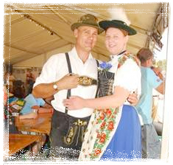 The name Altamont, like the name Mound Township, was bestowed upon it by J. W. Conlogue, Vandalia Railroad Superintendent, because of the elevation or "mound" which lies to the northwest. The first part of the word means altitude, the latter part mount, or mound.
The name Altamont, like the name Mound Township, was bestowed upon it by J. W. Conlogue, Vandalia Railroad Superintendent, because of the elevation or "mound" which lies to the northwest. The first part of the word means altitude, the latter part mount, or mound.
The town of Altamont was organized in 1871 and in 1901 it officially became a city. The community's leading citizen, Dr. Charles M. Wright, arrived in 1857, established a practice, and later opened a private bank and opera house. 1889 saw the completion of his 18 room Second Empire (Mansard), Italianate Style home on 27 acres. The mansion now is on the National Register of Historic places, after three generations of C. M. Wrights have resided there. It is open to tours, and much of it remains today, as well as contents, as when built.
There have been many factories located here, from glove factories, wagon factories, uniform / pants factories, furniture factory, three milling establishments, bottling plant, creamery, wholesale building supply, Brooks Tomato plant, and many other enterprises, due in part that four railroads once intersected the city. The city also sits on the edge of the Loudon Oil Field, one of the richest, longest pumping in Illinois. Carter Oil, in 1938, established a company-owned 33 home subdivision in the city for the influx of workers referred to as Carter Camp.
Today, Irwin Telescopic Seating Company, the top seating system company in the country, is located in Altamont. The Ballard Nature Center, also along the Old National Road, east of the city, is a 210 acre environmental and nature education site. Altamont continues to be home to a very large grain buying operation, as well as other smaller businesses. Since 1946, Altamont has been host of the Effingham County Fair.
Altamont has a National Road kiosk at City Park on the east side of the village and along Route 40.
Fayette County
St. Elmo
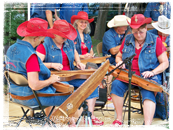 The origin can be traced back to Howard's Point, a tiny town about a mile west of present St. Elmo, which was founded in 1834 on the National Road. St. Elmo was platted in 1868 by four men, but the first house was not built until April 1869 by William Smith. St. Elmo was originally to be named for Thomas Murray, a wealthy Vandalia man who had been involved in the construction of the National Road. Murray declined the honor, but suggested the town be named St. Elmo after a popular book he had just read.
The origin can be traced back to Howard's Point, a tiny town about a mile west of present St. Elmo, which was founded in 1834 on the National Road. St. Elmo was platted in 1868 by four men, but the first house was not built until April 1869 by William Smith. St. Elmo was originally to be named for Thomas Murray, a wealthy Vandalia man who had been involved in the construction of the National Road. Murray declined the honor, but suggested the town be named St. Elmo after a popular book he had just read.
The town was the crossing point of the Vandalia Railroad and the Chicago, Paducah & Memphis line, which was later sold and became an extension of the Chicago & Eastern Illinois Railroad. The 1890s were the first boom years for St. Elmo as the year 1897 saw 122 houses and 15 businesses built. The year 1938 saw an oil boom in St. Elmo as the population of the town by the end of the year had doubled from 2000. With some 1500 oil wells in the area, St. Elmo garnered the nickname "Little Tulsa of Illinois."
The St. Elmo Juvenile Band brought attention to the town in 1930 when it finished third in a national band contest in Flint, Michigan. St. Elmo also holds a unique aviation history. Charles Lindbergh became good friends with local resident Joe Wright and frequently stayed in the community. The Lindbergh House, a 12 x 30 brick building in St. Elmo, was constructed in 1927 to honor his legendary Atlantic Ocean flight. After his return from Paris, Lindbergh went on a promotional tour across the United States in the Spirit of St. Louis. On June 17, 1927 he touched down at the St. Elmo airport and spent the night.
St. Elmo has a National Road kiosk located on Route 40 near the public library.
Brownstown
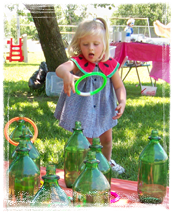 The village was laid out in 1870 by its namesake, John Brown, along the Vandalia Railroad line. The original town was only two blocks by four blocks in size and was slow to develop. By 1874 there were only three houses in Brownstown. Agriculture has played a prominent role in Brownstown's history. The Union Dairy was opened around the turn of the century and continued operation under different owners into the 1930s. In 1931, the Pevely Dairy operation in Brownstown was at the center of the "Milk Wars", a battle between milk producers and the company. Several incidents were reported in which milk trucks fell victim to sniper shots or were commandeered by masked men.
The village was laid out in 1870 by its namesake, John Brown, along the Vandalia Railroad line. The original town was only two blocks by four blocks in size and was slow to develop. By 1874 there were only three houses in Brownstown. Agriculture has played a prominent role in Brownstown's history. The Union Dairy was opened around the turn of the century and continued operation under different owners into the 1930s. In 1931, the Pevely Dairy operation in Brownstown was at the center of the "Milk Wars", a battle between milk producers and the company. Several incidents were reported in which milk trucks fell victim to sniper shots or were commandeered by masked men.
In 1937 the University Of Illinois College Of Agronomy selected Brownstown as the site of a research center. The university secured 120 acres and later that year built its first structure there, a 24 x 60 barn. The Brownstown location was one of the first comprehensive field research centers for the U of I.
Brownstown for many years had the largest truck stop between Terre Haute and St. Louis. The Dycus Oil Company opened the filling station in the 1920s and a few years later the McCoy's Restaurant was added. A November 1984 tornado wreaked havoc on the town with over 130 houses and businesses sustaining damage and seven people injured.
Brownstown has a National Road kiosk located along Route 40 in the middle of the village.
Vandalia
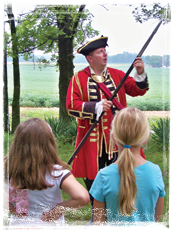 Vandalia holds the distinction of being founded to serve as the state capital. In 1819, Congress donated land to the state of Illinois for a capital and five commissioners were assigned the task of picking the location. A trip up the Kaskaskia River in May 1819 brought them to an area known as Reeve's Bluff, located on the river's west bank. It was here that the town of Vandalia soon emerged. The route of the National Road through Illinois was chosen because Vandalia was capital. When federal funding was eventually discontinued, the National Road had only reached as far west as Vandalia.
Vandalia holds the distinction of being founded to serve as the state capital. In 1819, Congress donated land to the state of Illinois for a capital and five commissioners were assigned the task of picking the location. A trip up the Kaskaskia River in May 1819 brought them to an area known as Reeve's Bluff, located on the river's west bank. It was here that the town of Vandalia soon emerged. The route of the National Road through Illinois was chosen because Vandalia was capital. When federal funding was eventually discontinued, the National Road had only reached as far west as Vandalia.
William Greenup, surveyor of the town and superintendent of National Road construction, was buried here at the old state cemetery. Abraham Lincoln served as a member of the Illinois House, his first statewide office, at Vandalia. A few years later, he received his license to practice law in the Vandalia Statehouse. Ten "Looking for Lincoln" panels tell the story of how Lincoln's time in Vandalia shaped his political career.
The first Illinois Masonic Convention took place December 9, 1822 in Vandalia and from that session a Grand Lodge was formed with Shadrach Bond, Illinois Governor, named Grand Master. The State of Illinois has operated a correctional facility north of Vandalia since 1921. The Daughters of the American Revolution in 1928 erected one of their Madonna of the Trails statues in Vandalia.
Vandalia celebrated its 200th (1819-2019) anniversary of its founding on June 15, 2019. There were activities like a parade, decorations along Gallatin Street, historic figures delivering speeches in the Old State Capitol (1819-1839), vintage craftspeople doing leatherwork, basket making, quilting, and an appearance by Abraham Lincoln who practiced law in the old Capitol. A committee published a 200th anniversary book with lots of historic views of Vandalia.
Vandalia has a National Road kiosk located downtown on Gallatin Street



